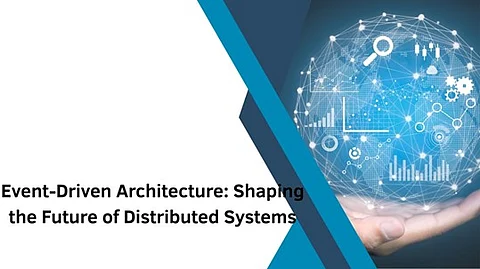

In the rapidly evolving world of technology, businesses must adapt quickly to meet growing demands for scalable, responsive, and resilient systems. In a groundbreaking article, Karthik Reddy Thondalapally explores how Event-Driven Architecture (EDA) is fundamentally transforming modern distributed systems. By utilizing asynchronous communication, EDA enables organizations to build robust, flexible, and agile systems that can handle massive workloads while remaining efficient and highly available.
Event-driven architecture (EDA) is becoming a key element of distributed systems, enabling communication through events that signal significant state changes. Unlike traditional architectures, EDA decouples producers and consumers, allowing asynchronous operation and reducing tight coupling. This enhances adaptability, fault tolerance, and real-time responsiveness. By adopting EDA, organizations can scale more efficiently, lower infrastructure costs, and achieve reduced system latency with increased throughput. These benefits make EDA an attractive choice across industries.
At the heart of EDA lies the interaction between event producers and consumers. These components operate independently, producing and reacting to events without direct knowledge of one another. This separation allows organizations to scale services independently, deploy new features faster, and reduce coordination overhead.
A core component that ensures effective communication between these event producers and consumers is the event broker. These message brokers, such as Apache Kafka, manage the distribution of events and ensure reliability even under heavy loads. They are crucial in enabling real-time processing, which is essential for maintaining high availability, particularly during failure scenarios.
One of the most compelling advantages of EDA is its ability to support real-time processing and analytics. As data streams continuously through the system, organizations can instantly analyze and derive actionable insights. This capability enables rapid decision-making, which is particularly valuable in sectors like healthcare, finance, and retail.
For instance, financial institutions use real-time analytics to process millions of transactions per second, maintaining data consistency across distributed ledgers and ensuring regulatory compliance. Retailers leverage these capabilities to manage inventory, reduce stockouts, and optimize supply chains. The ability to analyze large volumes of data provides businesses with a competitive edge by enabling faster response times to market shifts.
Event-driven architecture (EDA) thrives on asynchronous processing, allowing systems to handle events independently without waiting for other components. Unlike traditional synchronous models, which block until requests are processed, EDA boosts performance and scalability by enabling services to process events at their own pace. This approach supports horizontal scaling, adding more instances as needed. EDA also improves maintainability by reducing complexity and promoting loose coupling between services. This autonomy allows for the independent evolution of services, enabling frequent deployments, faster adaptation to changes, and greater business agility, ultimately accelerating time-to-market for new features.
In addition to the above, event-driven architectures also play a critical role in automation. Event-triggered workflows will enable the automation of multi-faceted processes that until now have depended on human intervention in business organizations. The level of automation reduces the chances of errors as well as improves efficiency, particularly in manufacturing and healthcare.
Employed in manufacturing, for example, these event-dependent systems would link production lines to automatic adjustments when variations are to be taken care of to improve throughput and reduce defects. In healthcare, such systems would enable faster processing of samples, much more accurately, with millions of patient-generated events being processed every day through some of these systems. Event-driven automation systems include flexibility and efficiency, so they will always apply in industries where the demand is precision and adaptability.
Benefits essentially exist; nevertheless, there are challenges in support of its implementation. One such challenge is event schema management. This requires preventing downstream consumers from being disrupted whenever changes are made to event schemas, and thus considerable care must be given to understanding what might require backward compatibility, planning the versioning of these events, and ensuring that when services evolve, backward compatibility maintains the integrity of the system.
Another consideration is ensuring eventual consistency which comes as the nature of an asynchronous system. Temporary inconsistencies arise within EDA as the data gets propagated through the system. Hence the enterprise has to ensure that the respective systems are capable of handling such inconsistencies in a graceful manner devoid of exposing the customer to inconvenience or losing some data. This is where successful organizations differentiate themselves from less successful ones: being able to embrace these issues and introduce appropriate error-handling, consistent management, and observability mechanisms.
In summary, Karthik Reddy Thondalapally expounded on the concepts of Event-Driven Architecture, accentuating the impact this strategy has on the design and operation of distributed systems. EDA enables loosely coupling the components of a system and focusing on asynchronous communication, allowing for building more resilient, scalable, and adaptable infrastructures. Although challenges like schema management and eventual consistency remain, the benefits of EDA, such as real-time analytics, enhanced scalability, and maintainability, are irrefutable. With the acceleration of digital transformation, EAD will increasingly play a key role in empowering organizations to innovate, enhance operations, and compete in a rapidly-changing environment.
